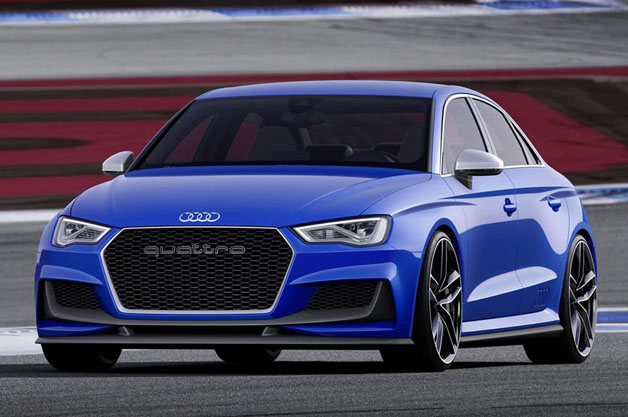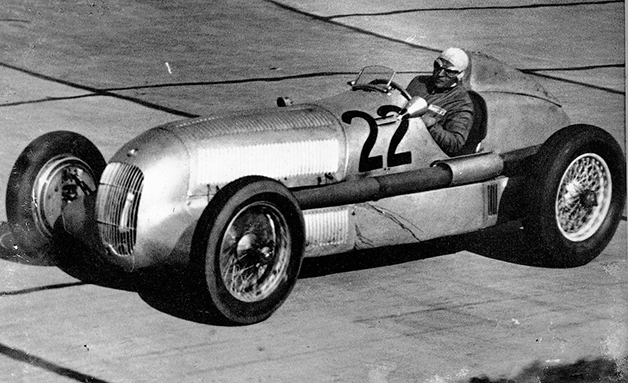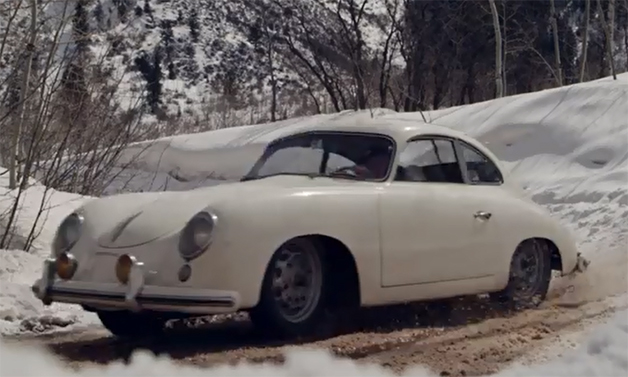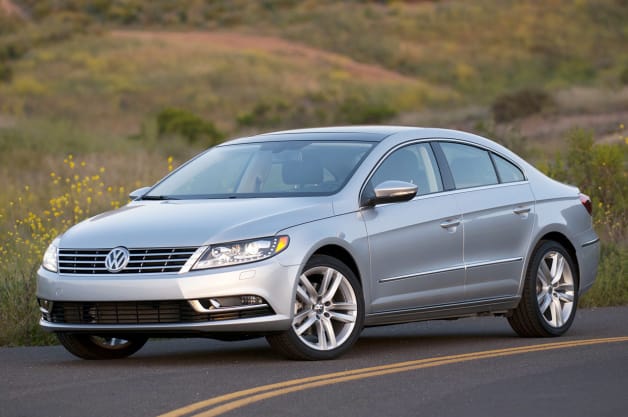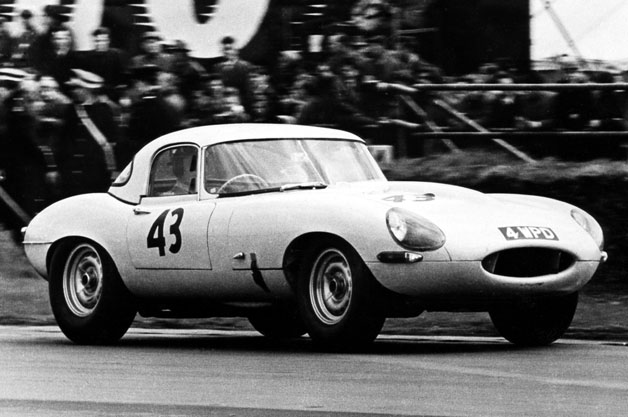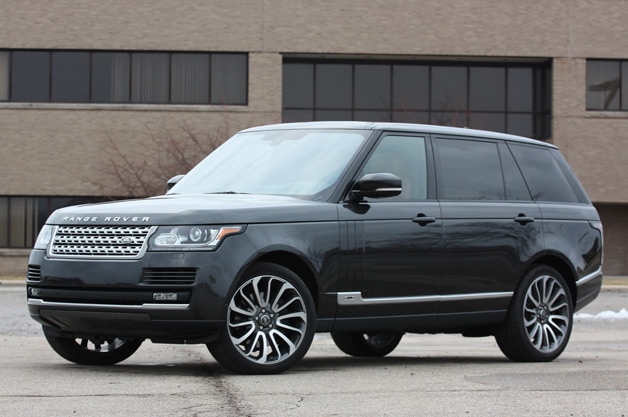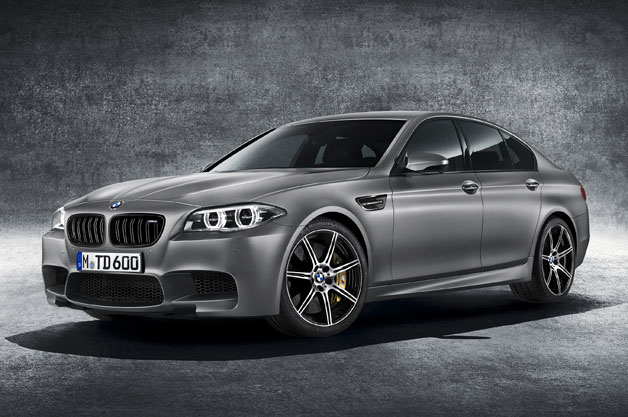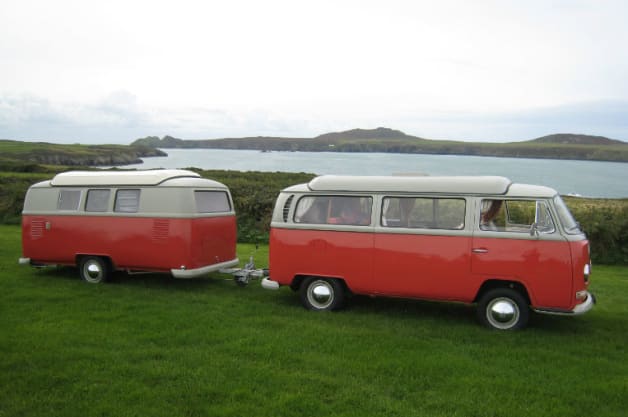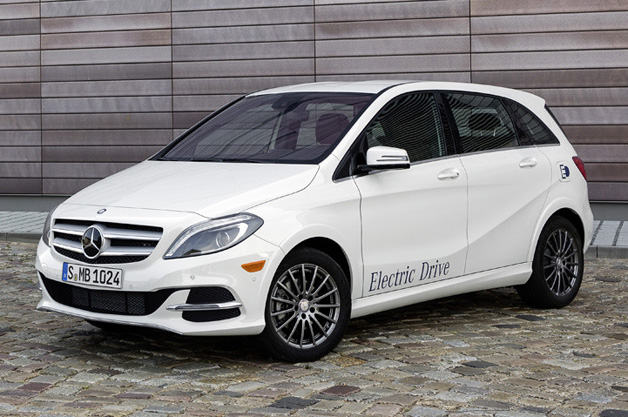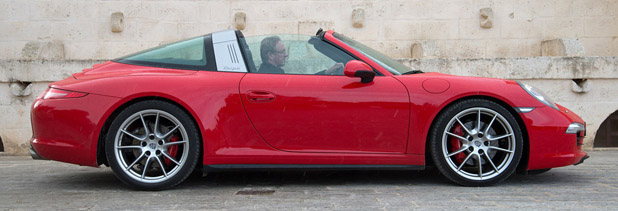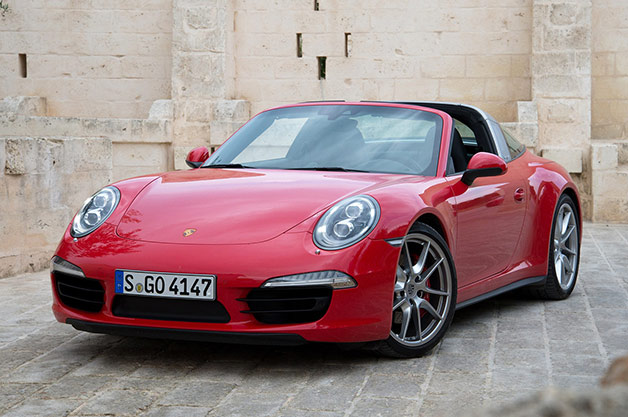
I've
watched
the electro-hydraulic roof panel open and closeabout 73 times in the past
hour, but its fascinatingly complicated operation still has me mesmerized. I've
concluded that only a German automaker –
Porsche, to be more specific –
would go through the trouble of engineering a roof system that essentially
lifts the entire greenhouse off a vehicle, rearranges its components like a
sliding-tile puzzle, and then reassembles all of them seamlessly (sans roof
panel) to accurately recreate one of its most famed bodystyles.
The 2014
Porsche 911 Targa is
a near-perfect modern interpretation of the automaker's 1965 911 Targa, a
semi-convertible bodystyle that represents nearly 13 percent of all 911 models
sold since production started 50 years ago. While the early car's roof was
purely manual in operation – that's the period-correct way of saying that the
driver did all of the muscle work – today's Targa is a completely automated
transformation that requires only that the driver hold down a cabin-mounted
switch for a mere 19 seconds to let the captivating show run its course.
After studying the Targa's elaborate roof operation at its launch at the
Detroit Auto Show earlier
this year, I was sufficiently intrigued. To that end, I traveled one-third of
the way around the planet to southern Italy, hoping that the Mediterranean
climate would reveal a bit more about the reintroduction of the automaker's
iconic sports car.
The last time Porsche offered a traditional Targa model with
a removable opaque roof panel was in 1992, on its 964 platform. Subsequent 993,
996 and 997 Targa models were all fitted with a retractable glass roof that
slid beneath the rear window as it opened the sky to its occupants, a clever
arrangement that nevertheless caused some annoying rearview distortions.
Interestingly enough, it wasn't until the arrival of the new 991 platform,
already offered in coupe bodystyle with a large panoramic glass sunroof that
slides over the rear window, that Porsche felt the market was open again for
the return of its famed Targa.
Even from a hundred yards, it doesn't take a trained eye to
spot the new Targa.
Even from a hundred yards, it doesn't take a trained eye to
spot the new model from the side. The two-door features a very thick and
distinctive bright aluminum "wide bar" B-pillar. Those approaching
from the rear will note the absence of a C-pillar, as the Targa utilizes an
innovative one-piece wraparound backlight in its place. Savvier observers will
note the new model's slightly wider rear axle, larger tire contact patch,
functioning thin red light bar that connects the rear taillamps, black sill
panels on each side between the wheels and unique inserts inside each corner of
the front fascia. Many of those features come directly from the Carrera 4
Cabriolet, a variant with which the new Targa shares its structure.
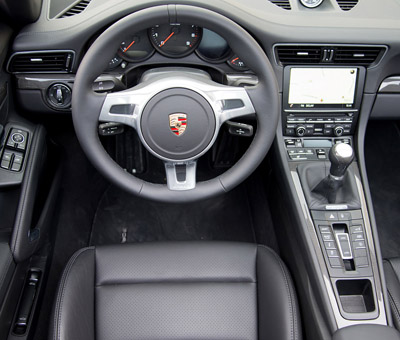
While the exterior is freshly retro-styled, the cabin of the Targa is virtually
identical to that of the Cabriolet, right down to the two small switches that
control the roof, which are located just under the driver's elbow in the center
console. This is precisely as intended, as the star of this show has nothing to
do with its commonality with the rest of the 911 lineup. Instead, the Targa is
all about its cloth-wrapped, retractable, rectangular roof panel mere inches
above the occupant's heads.
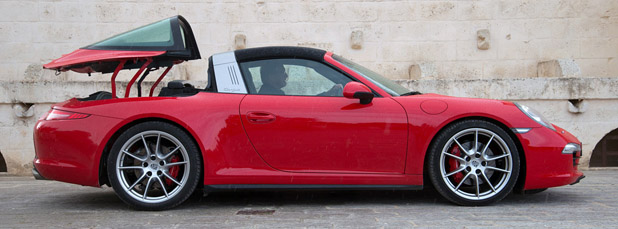
Porsche announced previously that the Targa will be offered
in two models: Targa 4 (base price $102,595 including destination) and Targa 4S
($117,195). The Targa 4 arrives with a 3.4-liter flat-six, rated at 350
horsepower and 287 pound-feet of torque, while the Targa 4S (as seen here in
our image gallery) is fitted with a larger 3.8-liter version of the same
engine, rated at an even 400 horsepower and 325 pound-feet of torque. All-wheel
drive is standard, but the automaker offers a choice between a seven-speed
manual and its seven-speed PDK dual-clutch gearbox. (As of now, all feature
bright aluminum Targa hoops and black fabric roof panels, but that may change
based on future customer requests.)
A glance at Porsche's pricing structure shows that the Targa commands a hefty
$10,570 premium over the Carrera 4 Coupe, but it's still $1,330 less expensive
than the Carrera 4 Cabriolet. Plus, the Targa shares some commonality with the
Cabriolet, helping to keep pricing below its sibling.
Interestingly, the Targa's development has been a long one – it was actually
prototyped on a 997 platform, but the project was shelved for the 991.
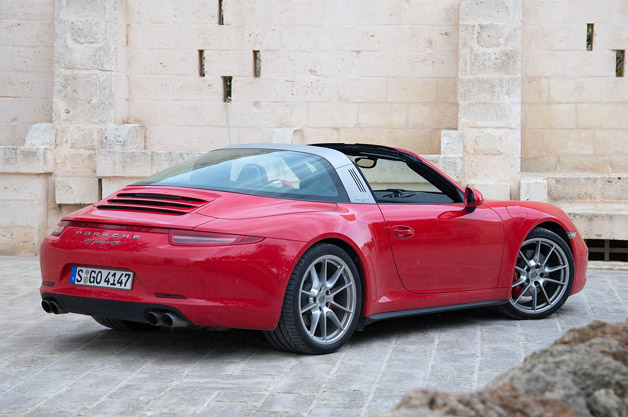
As my primary objective was to review the Targa roof, and not its outright
acceleration potential, I was undeterred by the half-dozen Targa 4S PDK models
parked at the rendezvous spot. Rather than seek out the most powerful model, my
feet made a beeline for a standard Targa 4 in Guards Red – with a traditional
manual gearbox, an increasingly rare find, especially when one considers it is
no longer available on the
GT3 and
Turbo models.
Before playing with the intriguing ceiling, I took a quick
look around. The view out the Targa's front windshield remains identical to
that from the Coupe and Cabriolet, but a slight turn of the head to either side
reveals the thick B-pillar that defines this model. While most won't find it
interfering, my six-foot, two-inch height required me to slide the driver's
seat nearly all the way to the rear on its tracks, which meant the pillars
block quite a bit of my peripheral vision. Thankfully, the two side mirrors and
interior rearview mirror fill in the gaps.
As the Targa "hoop" technically replaces the C-pillar on the Coupe
and the pop-up roll bars on the Cabriolet as rollover protection, its
construction is understandably robust. Buried within the panel is a steel roll
bar that reaches all the way to the floorpan on each side. It's finished on the
exterior with painted die-cast aluminum and on the interior in soft Alcantara.
The three gills visible on the outside of the bar are not functional; they pay
tribute to the original 1965 Targa.
Porsche's engineers have split the roof into two movable components. The
largest piece is the rear glass and its surrounding deck lid, which combines
thin laminated safety glass molded in a compound curve with an apron of
aluminum that's painted body color. The other part is the Targa panel, which is
a two-section magnesium roof bow covered in a fabric hood that folds into a
Z-shape when stowed. (The front section of the Targa panel should look
familiar, as it is borrowed nearly intact – with its electric locking mechanism
– from the same area of the Cabriolet roof). In addition to the aforementioned
components, there are two cable-actuated flaps, on each side of the rollover
hoop that open to allow the arms of the roof to pass through.
The full automatic Targa roof, powered by a single hydraulic
pump (as on the Cabriolet), only operates when the vehicle is stationary.
Porsche explains that when the heated rear window panel is tipped back to allow
the roof to open or close (the standard integrated ParkAssist monitors the area
behind the car preventing operation if an obstacle is in the way), it blocks
the view of the brake lights which would make it illegal – and ill advised – to
drive with the top in motion. Officials also mention that the rear assembly,
weighing upwards of 80 pounds, could make the vehicle less stable under certain
driving conditions when lifted high and tilted rearward. It's always better to
error on the side of safety.
Not only must the Porsche be stopped, a finger needs to be held on the roof
button for the duration of the opening or closing operation, which lasts just
under 20 seconds. (The process is about 30-percent slower than raising or
lowering the fabric roof of the Cabriolet, but there appear to be larger and
heavier components being moved around on the Targa.) There is no limit to the
number of times the electro-hydraulic system may run through its open/close
sequence. It may be run continuously, back-to-back, as often as the owner
wishes - this is helpful when showing off at a local Cars 'n Coffee show.
With the panel tucked away and the Mediterranean sunshine falling on my
shoulders, I moved the short-throw shifter into first and motored off towards
the Italian countryside
The standard Targa 4 doesn't have the low-end punch of the S
model, but spinning the engine around the tachometer still delivers brisk
acceleration. Porsche quotes a curb weight of 3,395 pounds, 242 pounds heavier
than the Carrera 4 Coupe (but only 88 pounds heavier than the Carrera 4
Cabriolet), making this the heaviest of the three bodystyles. Understandably,
its published 0-60 time of 5.0 seconds is a few ticks off those of its lighter
siblings (those looking for a bit more speed should check out the Targa 4S with
Sport Plus and PDK, as it does the same sprint in 4.2 seconds).
The standard Targa 4 doesn't have the low-end punch of the S
model, but still delivers brisk acceleration.
Few cars are as enjoyable to drive as today's Porsche 911,
as the rear-engine sports car obeys steering, braking and acceleration commands
almost telepathically. The engineers worked to keep the Targa's additional mass
low in the chassis, with meticulous attention paid to selecting lightweight
materials, so handling isn't compromised.
Most would also agree that a Targa roof improves the experience as it allows
occupants to enjoy the benefits of open-air motoring – the fragrant smell of a
countryside dotted with blooming almond trees and the pleasant exhaust note of
a flat-six – without the gale-force hurricane sometimes associated with
convertibles. But don't expect the Targa to completely isolate its occupants
from the elements, as there is a noticeable amount of wind hitting the bright
silver hoop directly behind the occupant's heads and spilling into the cabin at
speeds above 50 mph. Your date's hair won't be ruffled to shambles and nothing
in the cockpit will blow out, but there is a strong breeze and conversation is
slightly challenged when the top is stowed.
Engineering a Targa roof for a late-model vehicle, with a
low drag coefficient, is more difficult than it was in the 1960s when steeply
angled windshields blew the air far over the cabin. Plus, the "jump"
(the distance between the windshield surround and Targa hoop) is much greater,
which contributes to the problem. Buffeting is inevitable, but to reduce some
of the turbulent air, engineers have placed a manually adjustable two-position
wind blocker at the top of the windshield header. Its raised position is most
effective to reduce airflow, but it's also the loudest, as it places the small
plastic wing directly into the slipstream. Keep it in its default low setting
for best results.
There is a noticeable amount of wind hitting the bright
silver hoop and spilling into the cabin at speeds above 50 mph.
To accommodate its slightly heavier curb weight, Porsche has
retuned the Targa's front MacPherson struts and rear multi-link suspension. But
instead of matching the damping of the Coupe and Cabriolet, the Targa has been
calibrated for a slightly more compliant ride to suit its role as an all-season
grand tourer. The roads in Southern Italy would earn no better than a C- grade,
as the surfaces under the Porsche's wide Pirelli PZeros (the optional tires
were sized 245/35ZR20 front and 305/30ZR20 rear) were broken and rutted more
often than not. Regardless, the Targa's ride was surprisingly comfortable. The
optional Porsche Active Suspension Management (PASM) system, left in its
softest setting, proved enough to keep the wheels from impacting harshly over
even the roughest sections.
After fielding countless questions about body rigidity, Porsche's engineers
confided that the Targa is about 10 percent stiffer than the Cabriolet model
upon which it is based (the Coupe is reportedly twice as rigid as the
Cabriolet). Officials also say that the rigidity is the same with or without
the Targa panel in place – it's not a structural part of the chassis, which
improves suspension tuning. In any case, bouncing over ruts, crashing over
railroad crossings and being surprised by potholes seemed to have no measurable
effect on the platform in either configuration, but some other journalists
reported squeaking in the gasket between the windshield surround and Targa
panel when their roofs were closed. Porsche should have it addressed by the
time production vehicles roll off the line.
It seems no orientation with an open-roof car is complete
unless Mother Nature is allowed to test its weatherproofing. As huge raindrops
fell from the clouds, a quick detour to the side of the road had the Targa's
roof secured back in place and the coupe sealed tight from the elements. Back
at speed, the cabin was hushed. My recollection is that the Coupe is still
quieter (albeit with more tire noise), but the Targa's cabin levels are on par
with the Cabriolet, which is itself impressive for a softtop convertible.
Porsche says the 911 Targa will roll into showrooms at the end of June, and a
full day with the new model leads me to believe customers won't be hard to
find. While it lacks the single-minded sportiness of the enthusiast's-choice Coupe,
the Targa is fresh and distinctive on the road. Its uniqueness, fascinating
roof-mechanism kinematics and all-weather capability are sure to appeal to its
affluent clientele seeking an open-roof solution. Don't be surprised if it's a
success.
If there's one thing I've learned over the years, it's that Stuttgart doesn't
do anything half-baked – all of its products, from its entry-level
Boxster to its
flagship hybrid
918
Spyder, represent no-compromise engineering. That's true even when a
model's usage case and audience is decidedly narrower. That's certainly the
situation with this 2014 911 Targa 4, a car that stands as a meticulous modern
interpretation of a celebrated model from Porsche's past.
source: News Source: Copyright 2014 Michael Harley / AOL
Autoblog
by Michael Harley
http://www.boscheuropean.com
